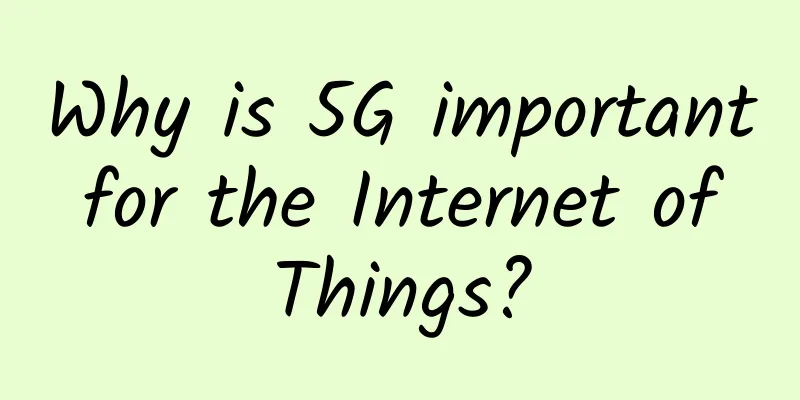How IoT, 5G, and NFV will impact data center infrastructure

|
As we all know, mobile data traffic is growing exponentially. The popularity of smartphones means more and more video services and higher traffic demand. Most telecom operators have chosen 5G. It is expected that the successful implementation of 5G in the next few years will further stimulate consumption by mobile users, which requires telecom operators to carry out more fiber optic deployment. In addition, the Internet of Things will also have an impact on the market. Billions of mobile devices plus sensors, smart grids, smart homes, connected cars and other various data sources will increase the number of IoT connections to tens of billions. The largest Cisco VNI forecast shows that the number of related devices connected to the network will increase from 7.9 billion in 2015 to 11.6 billion in 2020, most of which will come from the Internet of Things.
All of this traffic needs to be handled in the data center. The Cisco Global Cloud Index estimates that global data center traffic was 5 exabytes in 2016 and will grow to 10.4 exabytes in 2019. This will force data center operators to significantly scale their data center network infrastructure and keep it fast and cost-effective, and automation is the only way to make this possible. At the same time, forward-looking data center operators are trying to use leaf-spine architecture to support high levels of east-west traffic in data centers. While more efficient than the three-tier architecture, it also brings more connections that need to be tested and managed. The server is connected to the top-of-rack (ToR) switch via optical fiber, and the ToR and leaf-spine switches are connected via single-mode optical fiber. The backup redundant path is also connected by optical fiber. In the line rate migration from 10G to 100G and the future 200G-400G, these fiber links require more precise loss budgets and reflectivity requirements. Companies applying web-scale have put price pressure on optical transceivers and pluggable devices, forcing suppliers to streamline the functionality of their products, which is likely to reduce product quality. To mitigate this risk, operators need to ensure that they can pass failure tests and the cleanliness of fiber optic connectors. Telecom operators have also begun to adopt NFV, currently running virtualized functions on dedicated hardware on standard IT server platforms and managed using IT automation systems. We have seen the flexibility and agility that web-scale operators have achieved through the cloud and are looking forward to the final realization of virtualized functions. This transformation also puts forward requirements for development - waterfall flow can no longer meet the high speed, and operators are considering adopting the same DevOps solution as web-scale companies. Of course, all changes have the potential to increase complexity and risk. While automation gives operators efficiency, it also requires them to conduct extensive testing to improve the visibility and analysis capabilities of next-generation service assurance and monitoring systems. As physical and virtual resources will be highly distributed, an end-to-end view is critical. To better leverage 5G, IoT and NFV, operators must make steady progress in virtualization, automation and DevOps at every stage of infrastructure, services and processes. |
<<: Currently, CDN security is far from enough
>>: After the video industry cools down rationally, who is the most popular CDN?
Recommend
Four steps to plan your migration from IPv4 to IPv6
As IPv4 addresses are becoming scarcer, more comp...
BriskServers: $7.8/mo-AMD Ryzen9 7950x/4GB/80GB/Unlimited data @ 10Gbps/Ashburn
BriskServers was founded in 2021 by a group of ga...
Four types of network monitoring
Network monitoring can take many forms, depending...
Ele.me Cheng Yanling: Share the correct way to open the era of multi-active operation and maintenance of the whole site
[51CTO.com original article] On December 1-2, 201...
4G network speed is getting slower and slower. Are operators deliberately limiting the speed to allow 5G to be launched? Just look at the data to find out
[[437090]] Let's first look at a set of data....
Japan and Finland jointly develop 6G technology, Nokia will participate
Recently, foreign media reported that industry gr...
Latest version of Riverbed SteelCentral performance monitoring platform released
Riverbed Technology recently announced that the l...
Overview of Telecommunications Industry Development in 2017
The telecommunications industry is a hot field th...
How fast is 5G? How does the 5G network work?
[[257849]] 4G LTE has been providing ultra-fast d...
Big data industry is a new trend. What are the advantages of operators?
The big data industry is a strategic emerging ind...
Is 5G data expensive? Should I change my SIM card? Learn what you don’t know about 5G!
Do I need to change my phone or SIM card in the 5...
Aoyozhuji 20% off for all lines, US CN2/Hong Kong CN2/Germany CN2/Netherlands CN2/Hong Kong high-defense lines
Aoyozhuji is a long-established foreign VPS servi...
Wi-Fi 6: What's different and why does it matter?
Wi-Fi 6 is the next generation wireless standard ...
When 5G meets edge cloud, it is the fundamental reason why 5G changes the world
On June 6, 2019, a very auspicious day, the Minis...
WeChat's strongest rival! The three major operators have begun to deploy 5G messaging on a large scale
[[358302]] 5G messaging, which is seen by the ind...


![[Black Friday] ProfitServer Singapore/Germany/Netherlands/Spain VPS 50% off, unlimited traffic KVM monthly payment starts from $2.88](/upload/images/67cac2275c1e5.webp)




![[6.18] 80VPS regular VPS 50% off, special VPS annual payment starting from 199 yuan, multiple data centers in the United States/Hong Kong/Japan/Korea, etc.](/upload/images/67cabe7c72368.webp)

